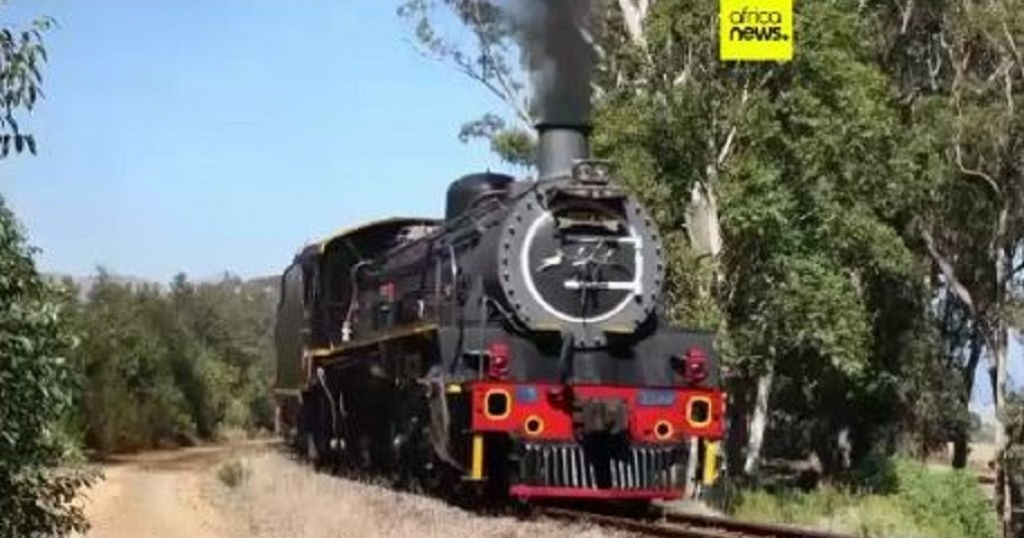
On a fresh Saturday morning, passengers board vintage railway cars in Cape Town for a 161-kilometer round-trip on a steam-powered train.
The Ceres Steam Train to Elgin ranks among the five steam heritage tours available in South Africa. For some, this is a brand-new adventure; for others, it awakens cherished memories.
Hans Luijk, celebrating his 60th birthday with his wife, recounts how riding a steam train takes him back to the 1980s when the South African military was involved in the Angolan conflict. “My last train journey dates back to about 38 years ago during my military service from Wingfield, close to Cape Town, to Grahamstown – approximately 900 kilometers away. My emotions were all over the place back then. Now, it feels like a leisurely and adventurous trip,” he recalls.
As the train cruises along at a leisurely 45 km/h, passengers have plenty of time to socialize, commemorate special occasions, or simply take in the views.
A highlight of the journey is the ascent of Sir Lowry’s Pass, after which the train enters the scenic Overberg region.
Steam trains were introduced to South Africa in the 1860s and were instrumental in the industrialization of the country.
In 1959, at the zenith of steam travel, the nation boasted 3,300 steam locomotives.
Peter Rogers, a steam train tour guide since the 1980s, attributes the longevity of steam trains in South Africa to the country’s abundant coal resources and the sanctions period that restricted access to diesel fuel. “Steam remained prevalent as a primary mode of traction because of our coal resources and the sanctions which made diesel fuel scarce. The last steam service on the Kimberley-De Aar line ran until around 1992,” he explains.
In 1992, when steam operations ended, around 700 steam locomotives were still operational. Today, around 20 steam locomotives remain in operation, including the one powering the Ceres Train.
Johan Fourie, who dedicated his career to the national railways from 1971 until his retirement in 2009, and has since been a steam train driver in the heritage sector, shares, “Steam is embedded in my being; it’s my first love. I often tell my wife that the steam engine is my first bride. There’s nothing like a steam engine; it has a life of its own. Ascending the mountain can be challenging, but we manage, slowly yet surely. That’s what being alive feels like! A steam engine interacts with you, unlike a silent diesel engine.”
The Ceres Train makes its final approach to the Elgin Railway Market.
Roger Orpen, the market’s owner, talks about the children’s reactions to seeing a steam train for the first time. “When the train whistles and releases steam, the kids come running out. They get startled by the loudness, only to realize it’s not a diesel, but a steam engine! This beauty was built around 1946,” he notes.
This steam train has been fully restored in 2015 and Orpen’s market embraces the spirit of steam travel with steampunk-inspired designs.
Keeping steam train travel alive in the 21st century comes with its challenges, especially the need to fabricate spare parts from scratch.
Rick Botha, the Ceres Train Director, points out that the passion for steam travel endures. “There are now more steam locomotives operating in the country than there were a decade ago. Definitely, there has been a steam revival, and interest is growing. Wherever steam operates, it draws a crowd. People adore it; they wave and cheer. There’s a unique happiness associated with steam that’s found nowhere else.”
On most weekends, both locals from Cape Town and international visitors get the chance to relive the nostalgia aboard the Ceres Train to Elgin.







